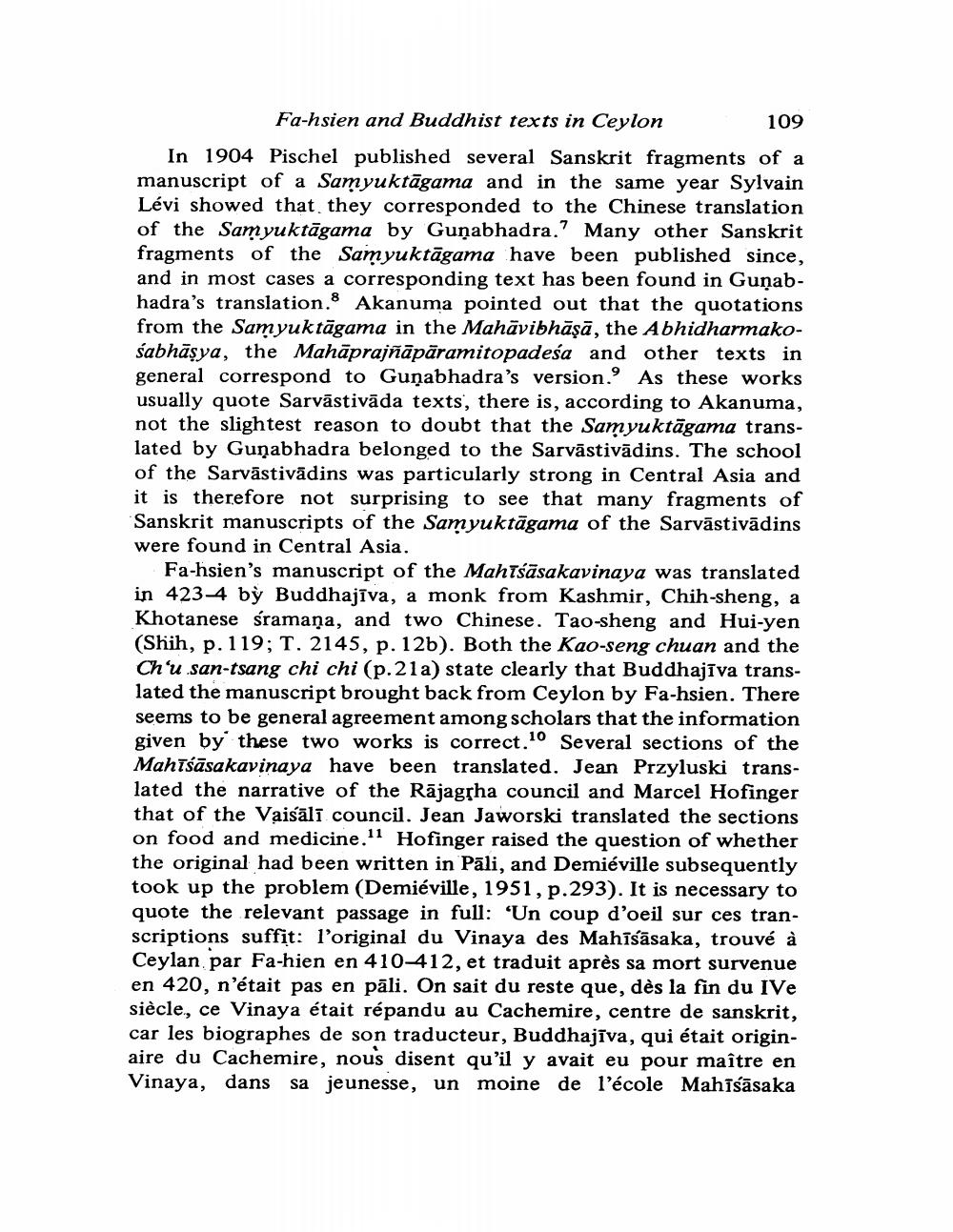________________ Fa-hsien and Buddhist texts in Ceylon : 109 In 1904 Pischel published several Sanskrit fragments of a manuscript of a Samyuktagama and in the same year Sylvain Levi showed that they corresponded to the Chinese translation of the Samyuktagama by Gunabhadra.? Many other Sanskrit fragments of the Samyuktagama have been published since, and in most cases a corresponding text has been found in Gunabhadra's translation.8 Akanuma pointed out that the quotations from the Samyuktagama in the Mahavibhasa, the Abhidharmakosabhasya, the Mahaprajnaparamitopadesa and other texts in general correspond to Gunabhadra's version. As these works usually quote Sarvastivada texts, there is, according to Akanuma, not the slightest reason to doubt that the Samyuktagama translated by Gunabhadra belonged to the Sarvastivadins. The school of the Sarvastivadins was particularly strong in Central Asia and it is therefore not surprising to see that many fragments of Sanskrit manuscripts of the Samyuktagama of the Sarvastivadins were found in Central Asia. Fa-hsien's manuscript of the Mahasasakavinaya was translated in 423 4 by Buddhajiva, a monk from Kashmir, Chih-sheng, a Khotanese sramana, and two Chinese. Tao-sheng and Hui-yen (Shih, p. 119; T. 2145, p. 12b). Both the Kao-seng chuan and the Ch'u san-tsang chi chi (p.21a) state clearly that Buddhajiva translated the manuscript brought back from Ceylon by Fa-hsien. There seems to be general agreement among scholars that the information given by these two works is correct.10 Several sections of the Mahisasakavinaya have been translated. Jean Przyluski translated the narrative of the RajagTha council and Marcel Hofinger that of the Vaisali council. Jean Jaworski translated the sections on food and medicine.11 Hofinger raised the question of whether the original had been written in Pali, and Demieville subsequently took up the problem (Demieville, 1951, p.293). It is necessary to quote the relevant passage in full: 'Un coup d'oeil sur ces transcriptions suffit: l'original du Vinaya des Mahisasaka, trouve a Ceylan, par Fa-hien en 410-412, et traduit apres sa mort survenue en 420, n'etait pas en pali. On sait du reste que, des la fin du IVe siecle, ce Vinaya etait repandu au Cachemire, centre de sanskrit, car les biographes de son traducteur, Buddhajiva, qui etait originaire du Cachemire, nous disent qu'il y avait eu pour maitre en Vinaya, dans sa jeunesse, un moine de l'ecole Mahisasaka




